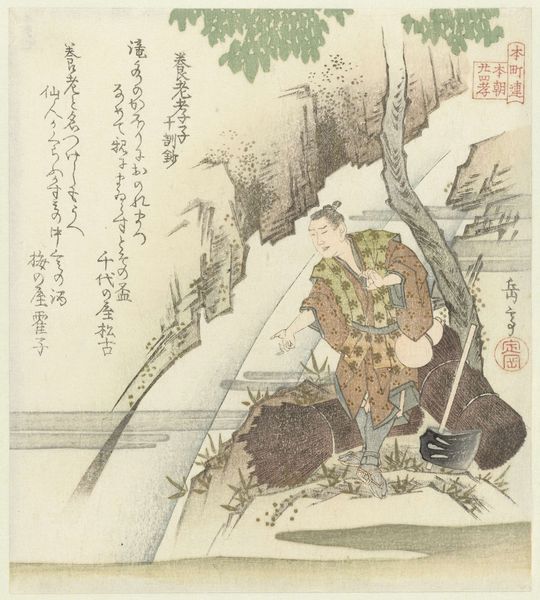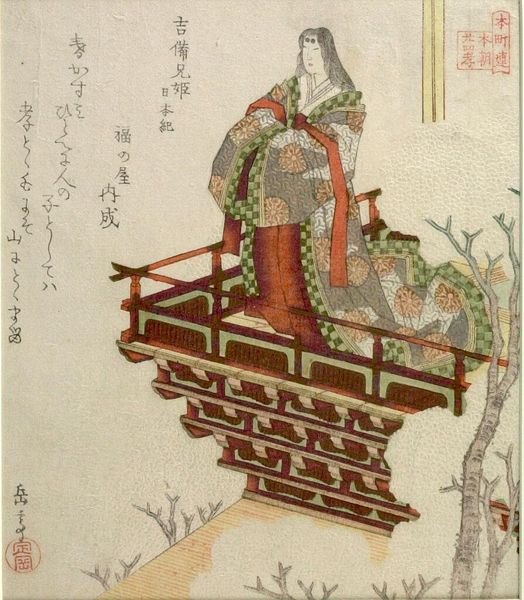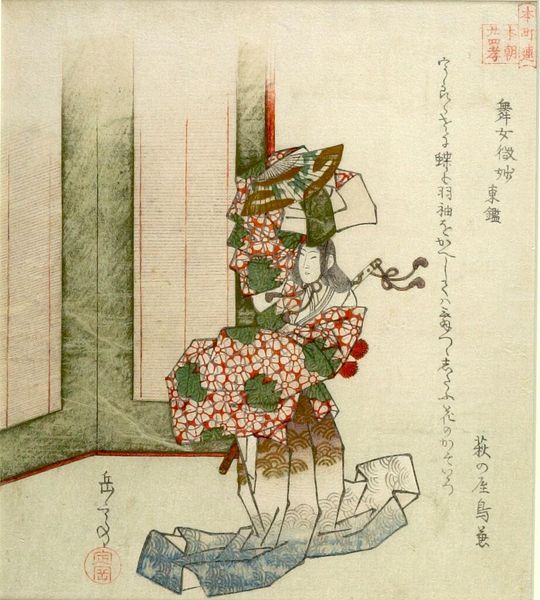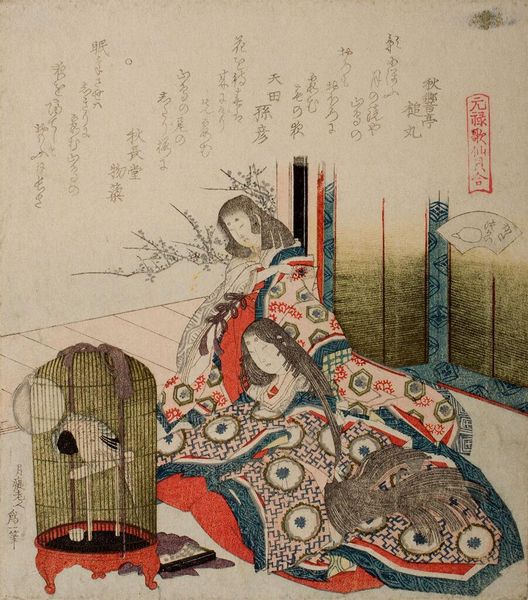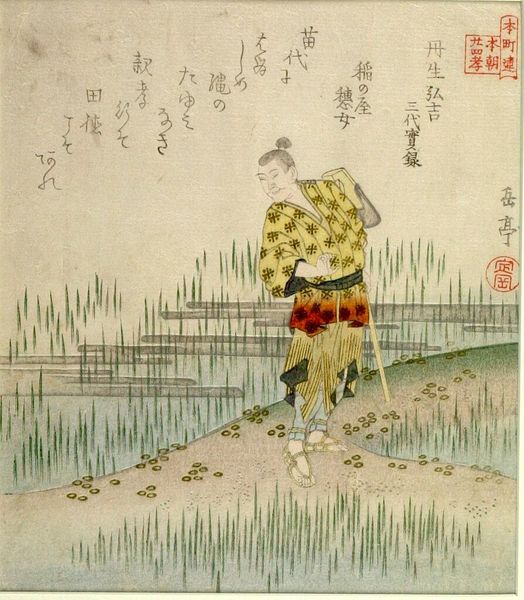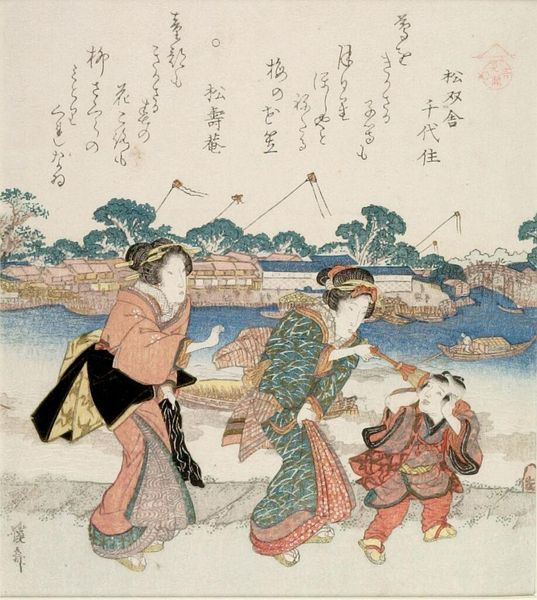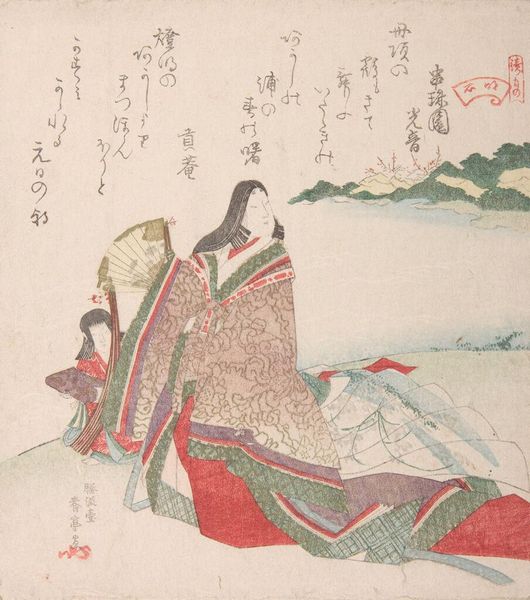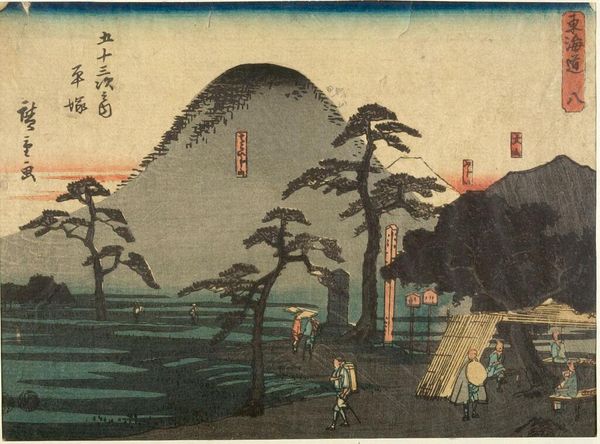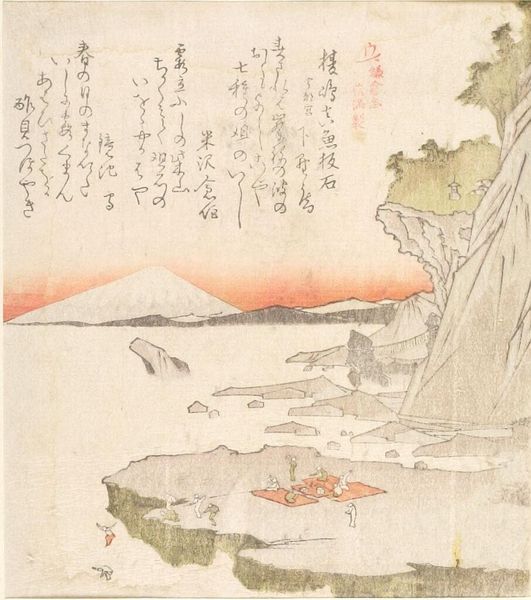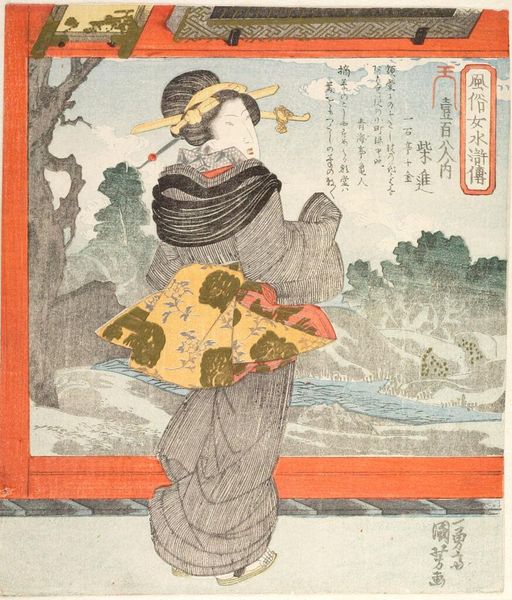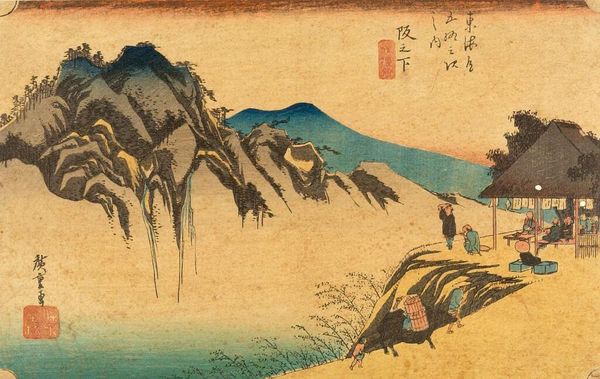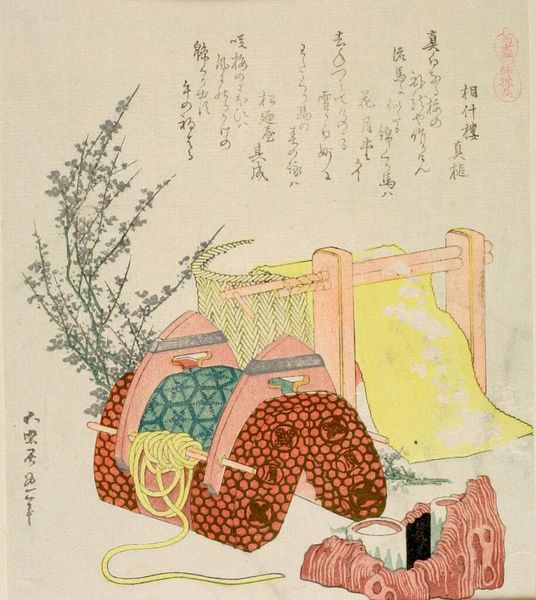
YÅrÅ kÅshi (JikkunshÅ), from the series Twenty-Four Japanese Paragons of Filial Piety for the HonchÅ Circle (HonchÅren honchÅ nijÅ«shikÅ), with poems by Chiyonoya Matsufuru and Umenoya Tsuruko c. 1821 - 1822
0:00
0:00
Dimensions: Paper: H. 20.9 cm x W. 18.0 cm (8 1/4 x 7 1/16 in.)
Copyright: CC0 1.0
Editor: This print by Yashima Gakutei, titled "YÅrÅ kÅshi," depicts a man next to a stream. The colours are quite muted and peaceful, but what strikes me is how the water seems to glow. What significance do you see in this image? Curator: Notice how the artist positions the figure near the water source and textual elements. Water is often a symbol of purity and renewal, closely tied to filial piety, and here it links directly to the story's moral lesson. What enduring messages do these visual symbols convey? Editor: So it's about more than just a nice picture; it's about conveying cultural values through recognizable images. I hadn't considered the cultural memory embedded in the water. Curator: Precisely. The artist uses familiar imagery to evoke deeper cultural understanding of respect and tradition, creating a lasting visual narrative.
Comments
No comments
Be the first to comment and join the conversation on the ultimate creative platform.
